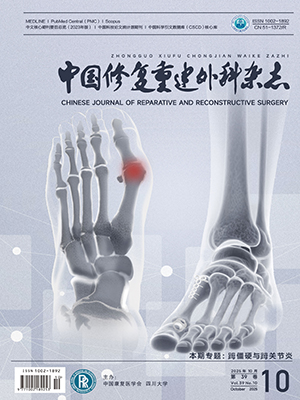| 1. |
Gönç U, Atabek M, Teker K, et al. Minimally invasive plate osteosynthesis with PHILOS plate for proximal humerus fractures. Acta Orthop Traumatol Turc, 2017, 51(1): 17-22.
|
| 2. |
Beeres FJP, Quaile OM, Link BC, et al. Reduction techniques for minimally invasive stabilization of proximal humeral fractures. Oper Orthop Traumatol, 2019, 31(1): 63-80.
|
| 3. |
Fisher ND, Barger JM, Driesman AS, et al. Fracture severity based on classification does not predict outcome following proximal humerus fracture. Orthopedics, 2017, 40(6): 368-374.
|
| 4. |
Maroun C, Aliani D, Hass A, et al. Shoulder arthroscopy combined to hardware removal in proximal humeral fractures: a series of 58 cases with a mean follow-up of 2 years. Eur J Orthop Surg Traumatol, 2017, 27(3): 317-321.
|
| 5. |
Chamseddine AH, El-Hajj OM, Haidar IM, et al. Minimally invasive percutaneous plate osteosynthesis for treatment of proximal humeral shaft fractures. International Orthopaedics, 2021, 45(1): 253-263.
|
| 6. |
Buranaphatthana T, Apivatthakakul T, Apivatthakakul V. Anteromedial minimally invasive plate osteosynthesis (MIPO) for distal third humeral shaft fractures–Is it possible?: A cadaveric study. Injury, 2019, 50(6): 1166-1174.
|
| 7. |
张英泽. 骨折顺势复位固定理论在创伤骨科中的应用. 中华创伤杂志, 2017, 33(7): 577-580.
|
| 8. |
Kim JY, Lee J, Kim SH. Comparison between MIPO and the deltopectoral approach with allogenous fibular bone graft in proximal humeral fractures. Clin Shoulder Elb, 2020, 23(3): 136-143.
|
| 9. |
Gardner MJ, Griffith MH, Dines JS, et al. The extended anterolateral acromial approach allows minimally invasive access to the proximal humerus. Clin Orthop Relat Res, 2005, (434): 123-129.
|
| 10. |
Fox O, Lorentzos P, Farhat M, et al. The change in position of the axillary nerve with rotation of the arm. Clin Anat, 2019, 32(2): 268-271.
|
| 11. |
Simone JP, Streubel PN, Sanchez-Sotelo J, et al. Change in the distance from the axillary nerve to the glenohumeral joint wth shoulder external rotation or abduction position. Hand (N Y), 2017, 12(4): 395-400.
|
| 12. |
盛宁, 褚光宇, 石文亭, 等. 肱骨近端双结节锁定钢板治疗肱骨近端骨折. 中华骨科杂志, 2020, 40(11): 726-733.
|




